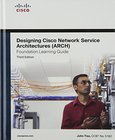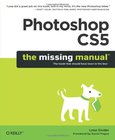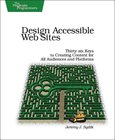Apr 19 2015 Added eBooks
Download free Apr 19 2015 Added eBooks
Implementing Cisco IP Routing
Foundation Learning Guide CCNP ROUTE 300-101
Now updated for Cisco's new ROUTE 300-101 exam, Implementing Cisco IP Routing (ROUTE) Foundation Learning Guide is your Ciscoauthorized learning tool for CCNPor CCDPpreparation. Part of the Cisco Press Foundation Learning Series, it teaches you how to plan, configure, maintain, and scale a modern routed network. Focusing on Cisco routers connected in LANs and WANs at medium-to-large network sites, the authors show how to select and implement Cisco IOS services for building scalable, routed networks. They examine basic network and routing protocol principles in detail; introduce both IPv4 and IPv6; fully review EIGRP, OSPF, and BGP; explore enterprise Internet connectivity; cover routing updates and path control; and present today's router security b...
Designing Cisco Network Service Architectures
Foundation Learning Guide CCDP ARCH 642-874
3rd Edition
Designing Cisco Network Service Architectures (ARCH) Foundation Learning Guide, Third Edition, is a Cisco-authorized, self-paced learning tool for CCDP foundation learning. This book provides you with the knowledge needed to perform the conceptual, intermediate, and detailed design of a network infrastructure that supports desired network solutions over intelligent network services, in order to achieve effective performance, scalability, and availability. By reading this book, you will gain a thorough understanding of how to apply solid Cisco network solution models and recommended design practices to provide viable, stable enterprise internetworking s...
Photoshop CS5
The Missing Manual
You'd be hard-pressed to find a published image that hasn't spent some quality time in Adobe Photoshop. With new features such as Content-Aware Fill and Puppet Warp, Photoshop CS5 is more amazing -- and perhaps more bewildering -- than ever. That's where this full-color Missing Manual comes in. It covers Photoshop from a practical standpoint, with tips, tricks, and practical advice you can use every day to edit photos and create beautiful documents. Whether you're a beginner or an experienced pixel pusher ready to try advanced techniques, author and graphics pro Lesa Snider offers crystal-clear, jargon-free instructions to help you take advantage of these powerful tools -- not only how they work, but when you should use them. Describing the CS4 editi...
How to Cheat in Maya 2014
Tools and Techniques for Character Animation
All professional animators know a handful of secrets that give them an edge in a production environment. "How to Cheat in Maya" puts these secrets in your hands! Learn time and energy-saving techniques tested in real Hollywood productions in this book, jam-packed with screenshots and scene files designed to get you up to speed quickly. From menus to modeling, lipsync to lighting, How to Cheat in Maya 2014 covers all of the methods available in the latest version of Maya. Get up to speed quickly and produce stellar resultswiththese insiderworkflows. With new, updated cheats for the latest version of Maya, How to Cheat in Maya 2014is an essential guide for amateur and professional 3D animators alike.Fully updated with gold-mine coverage incl...
Design Accessible Web Sites
36 Keys to Creating Content for All Audiences and Platforms
It's not a one-browser web anymore. You need to reach audiences that use cell phones, PDAs, game consoles, or other "alternative" browsers, as well as users with disabilities. Legal requirements for assistive technologies as well as a wide array of new browsing experiences means you need to concentrate on semantics, alternate access paths, and progressive enhancement. Give your audience the power to interact with your content on their own terms. It's the right thing to do, and with a $100 billion a year market for accessible content, new laws and new technologies, you can't afford to ignore accessibility. With this book, you'll learn basic principles and techniques for developing accessible HTML, audio, video, and multimedia content. In add...
2007 - 2017 © eBooks-IT.org





